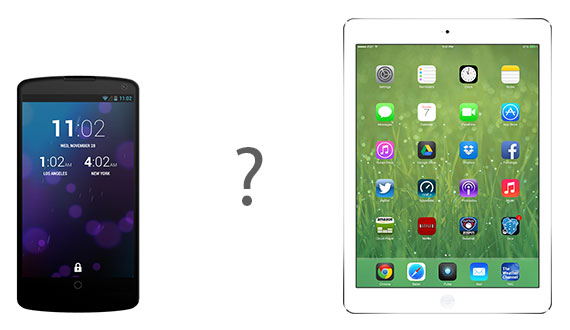![]()
The computer market is in a state of flux. Smartphones and tablets seem to be taking over. In 2014, tablet sales are expected to hit 270 million sales worldwide. Meanwhile smartphones are already owned by 22 percent of the global population. PCs, on the other hand, are only used by about 20 percent of people. Consumer electronics spokesman Mark Glasspool points out that major growth is expected across the whole mobile landscape as “tablets have emerged from all different parts of the market.”
Though tablets and smartphones both help users go mobile with virtually everything, they are unique from one another. And this means that both devices require unique mobile strategies. Rather than making sweeping mobile tactics, it is important to focus on their unique features.
Why Size Matters
It might sound too obvious to bother pointing out, but the biggest difference between tablets and mobile phones comes down to size. Tablets offer much more screen space to work with while smartphones have a minimized screen. Thus, mobile app design must be specific to each type of device.
The larger tablet screen allows for more details to appear in the app and still be easily seen by the user. Similarly, buttons and options can occupy a smaller percentage of the screen because the bigger size makes it possible for users to still navigate with ease and hit buttons with their fingers.
A smartphone, on the other hand, must design with small space in mind. Buttons and text should be proportionally larger on the screen so that they can easily be hit and read. Clutter should be another consideration. Too many tiny graphics or other information packed into a small screen results in a poor and complicated user experience.
Picking a Platform
Another design difference happens when comparing Android and iOS platforms. When developers are determining which platform to choose, they typically look at their target audience to clue into which operating system most prospective users will have.
Each platform requires unique development of an appropriately designed app. So when creating an initial app, many developers elect to start with the most popular device amongst the target demographic. For example, an app aimed at elementary school teachers will probably design for the iPad since this is a popular classroom device.
Different Form, Different Function
While tablets and smartphones are both manifestations of mobile, they present two different forms which lend themselves to different functions. Tablets can be found at work in restaurants as a digital menu. Smartphones can be used to make old fashioned phone calls which tablets do not.
And while both device types are undoubtedly mobile, smartphones tend to be the device of choice when out-and-about, whereas tablets receive more use at home when kicking back and relaxing or researching. BusinessInsider.com points out these differences especially when shopping is involved. Tablets tend to be the “lean-back devices that consumers use to browse, research and buy” after reading a great product review and learning about the item. But smartphones are “much more commonly used as an in-store shopping companion.” They can scan QR codes for information, open up a mobile coupon at the register or hop online to compare prices at other retailers.
Conclusion
Whereas tablets present a large workspace for browsing, smartphones tend to be used on-the-go to help with practical functions on a small screen. So there are multiple ways that smartphones and tablets differ despite their similarity in other areas.

Leave a Reply